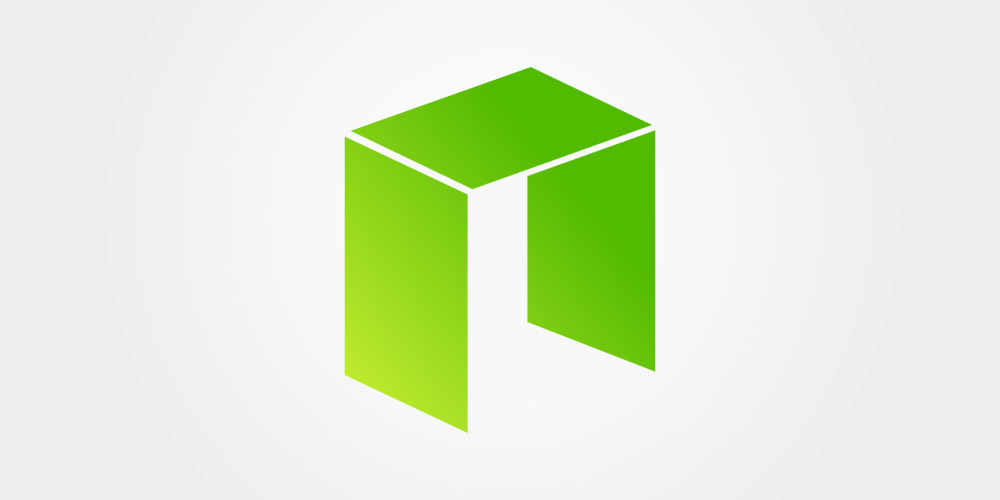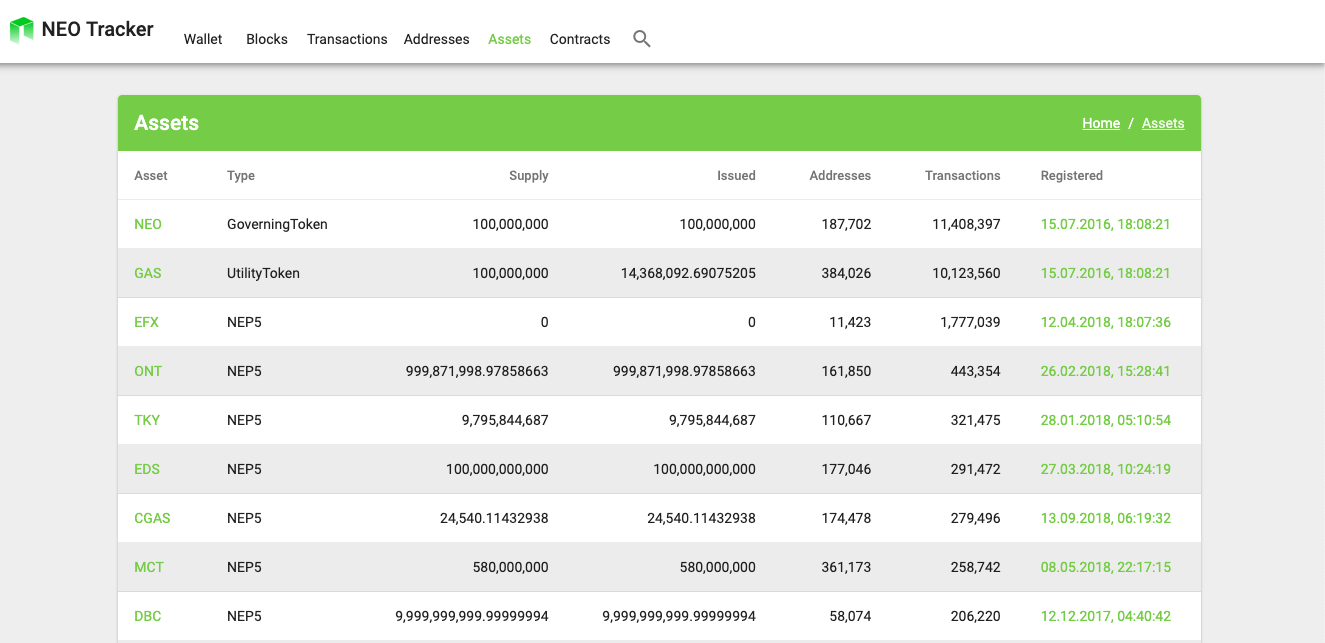
 https://neo.org/logo
https://neo.org/logo AirdropAlert has already covered multiple blockchains, such as EOS, TRON, Ethereum. No wonder it’s time for NEO – one of the pioneering blockchains in the history of crypto.
‘Our philosophy is not to be censorship-resistant. Bitcoin and Ethereum — they want to be censorship-resistant. With NEO, we want to be compliant.’ NEO Founder Da Hongfei
The fact that they want to be compliant is not the only difference between the ‘Chinese Ethereum’ and other blockchains.
Technically, NEO has got an individual consensus mechanism, dissimilar smart contract system and high scalability.
From an economic point of view, they have built a separate governance model, with their tokens standing out. Yes. They’ve got two tokens.
Read up on it in our review down below.
NEO was built to be regulatory compliant

Unsplash.com
The story dates back to 2014…
Precisely at the time, Chinese cryptocurrency pioneer Da Hongfei and a group of same-minded technical enthusiasts were holding a series of meetups in Shanghai.
In the process of those meetups, the group came up with an idea to develop a blockchain platform for crowdfunding purposes.
Back then, though, Etherum didn’t exist, nobody knew the word ICO and instead of saying blockchain they were talking about the technology underlying Bitcoin.
And yet, this is how the NEO story kicked off.
At around same time, local enterprises and governmental bodies started approaching Da Hongfei’s company en masse with the only request
They wanted their own blockchain platforms developed.
With such an increase in demand for very certain solutions, the group of blockchain enthusiasts decided to start a separate company, Onchain.
The Onchain company started building regulatory compliant blockchain platforms for governmental and financial institutions.
So, back in time we could find Asian crypto pioneers with a lot of work on their hands.
Still and all, they never forgot about the promising idea of crowdsales on the technology underlying Bitcoin and kept on developing their platform. They called it Antshares.
There was one interesting aspect, though…
Because the team was completely submerged in the matter of regulatory compliance, they wanted to create not only a decentralized crowdfunding ecosystem, but an ecosystem where everyone could have a digital identity.
Such a strong KYC policy was great. It protected the protocol from someone to use it for money laundering or evading taxes.
In 2017, after a few moderately successful investment rounds, Onchain gave Antshares another name — NEO.
According to their whitepaper, NEO’s goal is to achieve “smart economy” with a distributed network. It combines digital assets [1], digital identities [2] and smart contracts [3].
Digital assets [1]

Unsplash.com
Contract assets (NEP-5 tokens)
Do you remember, in the beginning of the article we were talking about the initial idea behind NEO?
Originally, Da Hongfei, Erik Zhan and their fellow blockchain enthusiasts meant to create a crowdfunding platform on blockchain.
The concept of contract assets is coming from that place.
Contract assets are NEP-5 tokens on the NEO blockchain. And by buying them you help the project behind the token grow.
To make it easier, let’s say NEO’s NEP-5 token standard is synonymous to Ethereum’s ERC-20.
Of course, there is a lot of narrative to share in connection with the contract assets.
First of all, those who fund the project on NEO can trade, register and circulate their tokens in a decentralized, traceable and transparent way, with no intermediaries en route.
Also, the system will protect your contract assets by law if you register them with your validated digital identity, another concept that mushroomed up on top of NEO.

Browse contract assets on NEO https://neotracker.io/browse/asset/1
Global assets (NEO and NEOGas)
So now when you know that the first category of digital assets on the NEO blockchain is called contract assets or simply NEP-5 tokens, let’s take a closer look at the second category, global assets, or NEO (NEO) and NEOGas (GAS).
In the NEO world, NEO is a governing token and GAS is a utility token, but you can sell both of them on crypto exchanges.
How is NEO a governing token?
According to the editor of NEO Smart Economy, Malcolm Lerider, each NEO token gives a voting right, which is used to vote for consensus nodes.
“Consensus nodes are the nodes that will generate blocks and make decisions for the blockchain,” Lerider explains, “for example setting the service fees for the blockchain. Moreover, each NEO token will slowly mint a new GAS during 22 years.”
What is GAS, then?
On the report of the official whitepeaper, GAS is the fuel token the NEO network charges for the operation and storage of tokens and smart contracts, thereby creating economic incentives for bookkeepers and preventing the abuse of resources.
The minimum unit of GAS is 0.00000001.
Malcolm Lerider further clarifies that GAS is the token to pay for all the service fees on the blockchain.
“Any company that desires to register or change assets on the blockchain will have to acquire GAS to pay for the service fees,” says the editor.
“The service fee for registering or changing assets will be distributed proportionally to all NEO holders, so GAS is never destroyed,” Lerider concludes.
To register your own asset on NEO will cost you 500 GAS, which you don’t get for a song. Check out the current NEOGas price yourself.
The NEO team believes this approach makes sense. After breaking their bank and paying 500 GAS developers will have an incentive to put the crowdsaled money to good use but not vice versa.
If you have NEO, keep in mind that every time a new block gets generated, you get your little fraction of GAS.
Yes. Owning any amount of NEO produces GAS, whether or not you’re connected to the Internet.
If you want to earn free crypto, as a regular NEO user while being on vacation, generate GAS by simply staking NEO in your NEON wallet.
Digital identity [2]

Unsplash.com
As we’ve mentioned earlier, the NEO team has created their blockchain with a very practical goal in mind, to add value to the real-world businesses, compliance-wise.
In China, where crypto exchanges and public ICOs get easily banned, regulatory compliance is a delicate thing you cannot omit just like that.
So the NEO team started figuring this out and solved the puzzle in a very interesting way.
They have come up with an idea of digital identity. That being said, to turn the idea into reality, the coders developed a separate blockchain network, Ontology.
On top of the network, users can create their own ID, attach data to their employee’s IDs or simply authorize and introduce new people to the network.
And this new network works well in collaboration with the NEO blockchain.
Let’s hear what Da Hongfei has to say about it:
NEO is a more generic, or general, blockchain. You can build any sort of decentralized application on top of NEO. And Ontology is more focused on digital identity. So, if you are developing dApps for digital identity, you probably should use Ontology. So Ontology is focused on one direction, but NEO is for general.
To sum up, you can use Ontology together with NEO, but you can’t use Ontology together with other blockchains. That’s why they always say that NEO focuses on digital identity when in fact it just adds the features of the other network as an additional layer.
Smart contracts [3]

Unsplash.com
With the NEOContract smart contract system, developers don’t need to learn new programming languages. This is one of the biggest features of the NEO blockchain.
Similar to the EOS blockchain, the NEO devteam has implemented familiar programming languages, C#, Java, Python as well as familiar IDE environments, Visual Studio, Eclipse for wider adoption of the network.
Also, the community likes pointing out the debuggers and compilers that make the process of development easier.
As the NEO whitepaper states, the NeoContract smart contract system will allow millions of developers around the world to quickly carry out the development of smart contracts.
To sum up…

Unsplash.com
What you should know about NEO first and foremost is this. Their objective has always been to create a smart economy model for large-scale enterprises. And in their view, this smart economy model consists of three key components. These are digital assets, digital identity and easy-to-learn smart contracts.
First, digital assets fall under two categories. The category number one is global assets, NEO and NEOGas. Contract assets or NEP-5 tokens are number two. Other projects built these tokens on NEO.
Second, digital identity is a feature that could help businesses utilize blockchain in the real world and overcome difficulties with regulations.
And last but not least, as for smart contracts, the NEO team has built them in a way that almost every developer can create a dApp on the NEO blockchain.
That is to say, are you intrigued? Do you want to earn some GAS or collect NEP5 token airdrops? Start with installing one of these simple NEO wallets for beginners.
***
Did you like the article? Please click the  button and keep on reading!
button and keep on reading!
What is Ripple (XRP)? ← P R E V I O U S
N E X T → What is TRON (TRX)?




